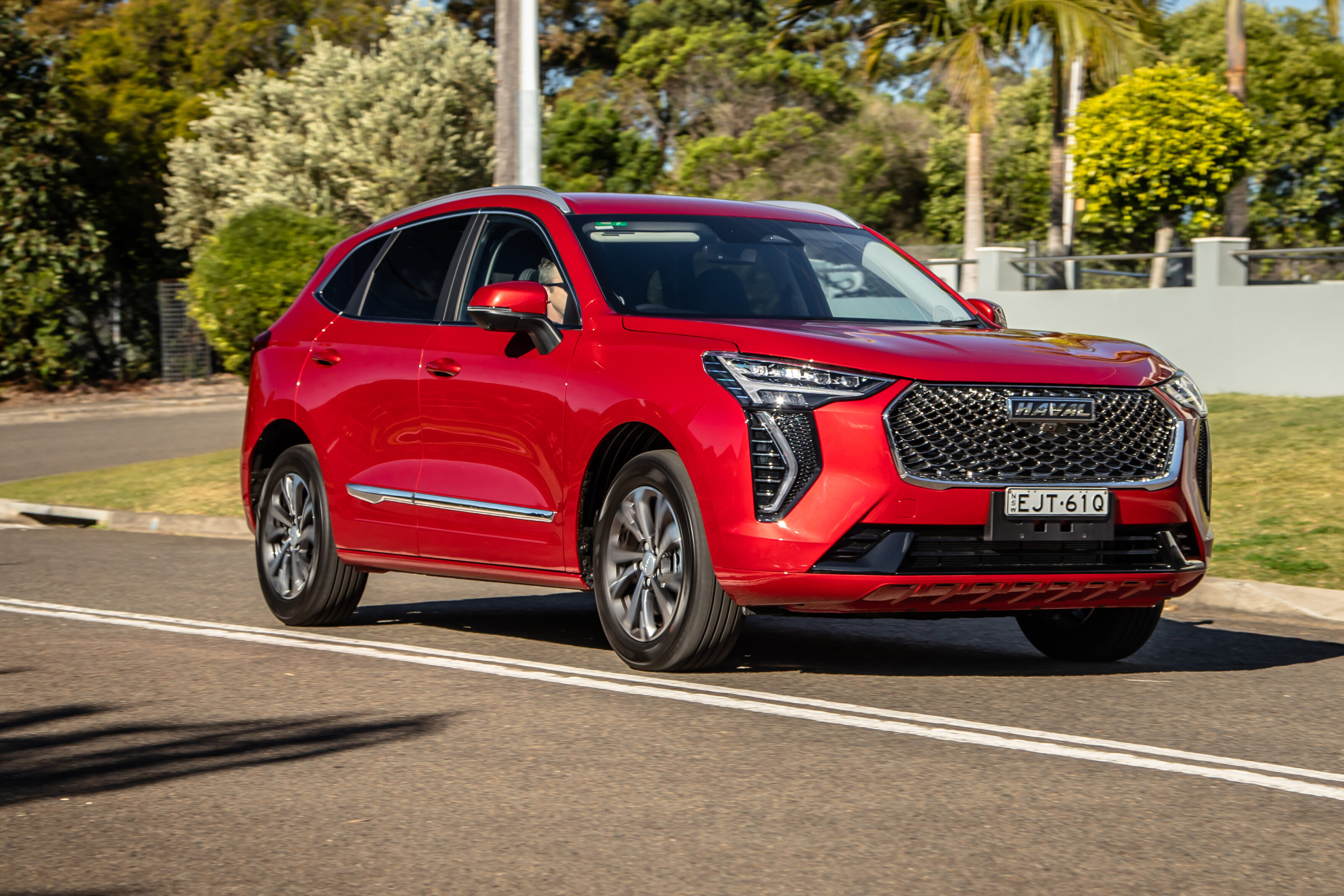Sometimes in this business we like to damn cars, particularly from newer manufacturers, with faint praise.
We’ll call something an “attempt” at a compact SUV, which is a way of saying, “nice try, buddy, come back when you’ve had another crack”.
I was kind of expecting that for the Haval Jolion. Keep at it. See you in a couple of years.
But a dive into the spec sheet, a quick – and frankly frightening – look at its predecessor the H2 and a few days behind the wheel of the Jolion wiped the patronising smile from my dial. While still far from perfect, the Jolion is ready for prime time and will be even better once a few wrinkles are sorted.
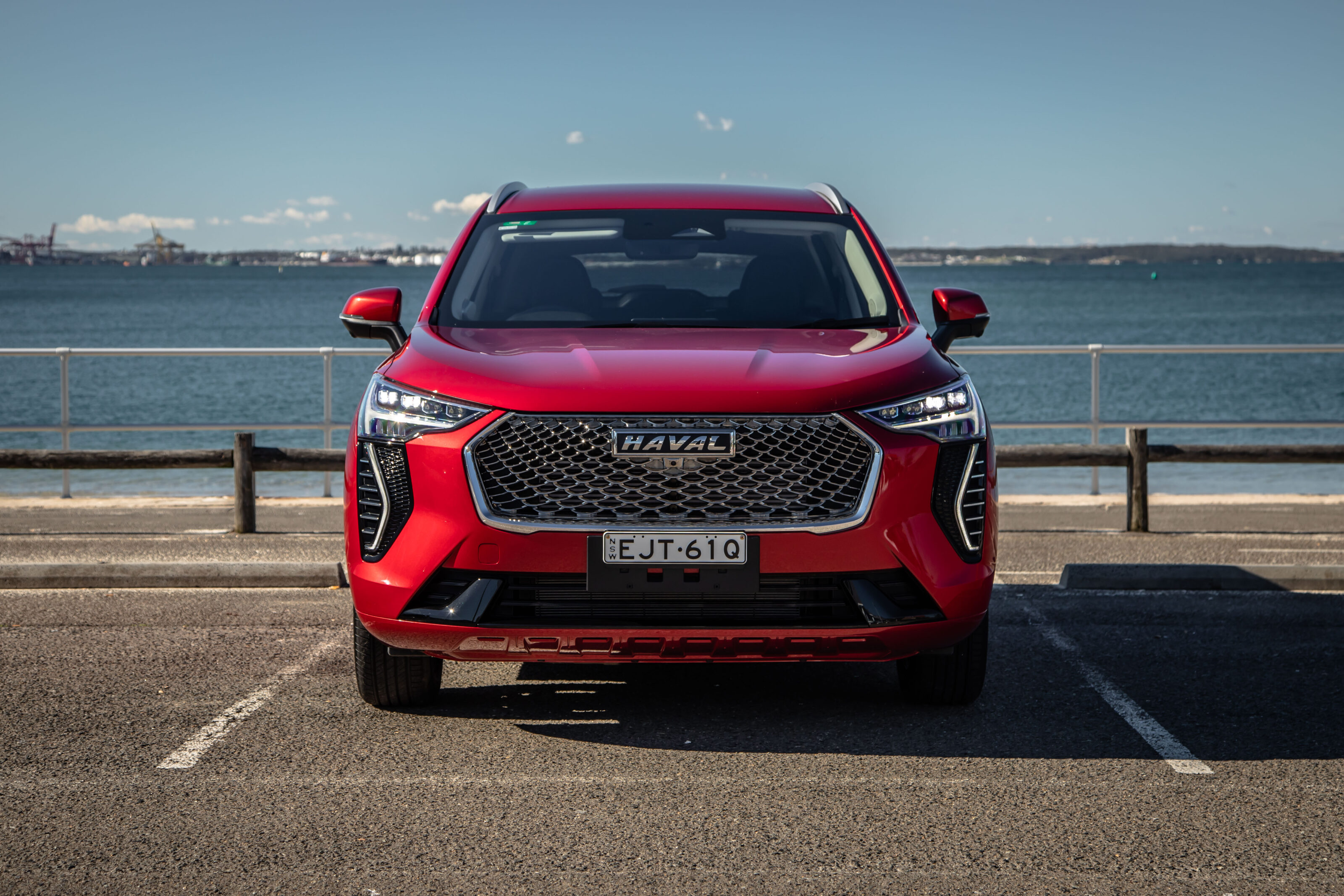
Pricing and features
There are three Jolion variants, with two already on sale. The range-topping Ultra will join the other two this month and all three have drive-away pricing.
If you’re wondering about the name, it’s a rough translation of the Chinese word chulian, meaning first love. A bit presumptuous, but there you are. Haval has some pretty wild names in the mix, as you’ll soon see.
Starting at $25,490 for the Premium (which isn’t at all confusing), you’ll find 17-inch alloys, reversing camera, rear parking sensors, cloth trim, analogue dash, four-speaker audio and a 10.25-inch media touchscreen. Apple CarPlay and Android Auto are along for the ride.
For $27,990 the mid-spec Lux sells adds dual-zone climate control, 360-degree cameras, powered and heated front seats, leather steering wheel, LED lighting (including headlights, daytime running lights and fog lamps), a fully digital dash and a six-speaker sound system.
The final step is the $30,990 Ultra, which has 18-inch alloy wheels, a panoramic sunroof, wireless charging pad, head-up display and a bigger 12.3-inch media system.
Haval’s media system is a bit ho-hum but better than, say, anything in a Toyota. Every time you start the car it forgets to connect to Bluetooth, which is fabulously irritating if you don’t have a USB cable. Probably more annoying are the tiny targets on the screen that make it hard to use on the move. But as I say, streets ahead of anything from the world’s largest carmaker.
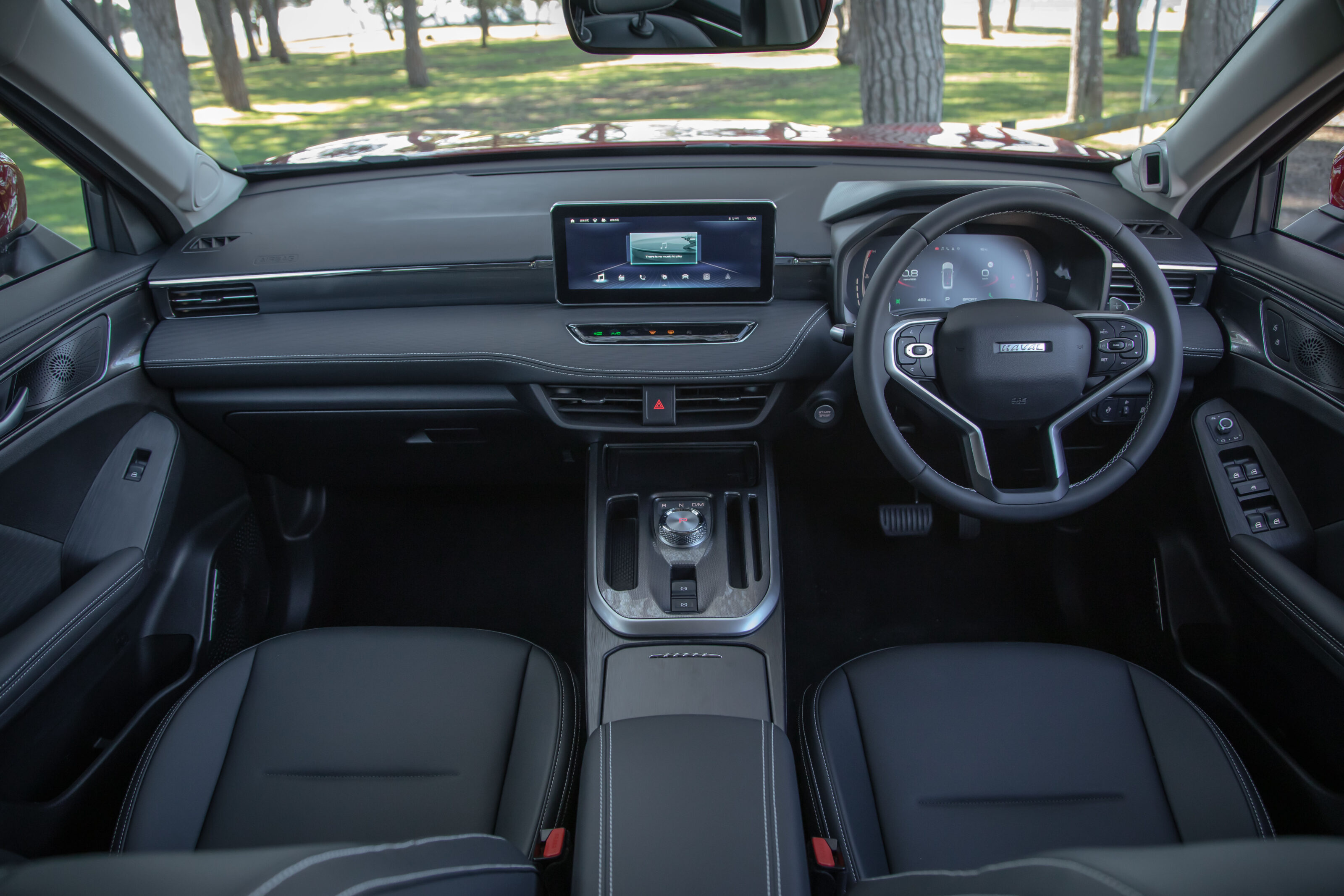
There are two USB ports up front, one of which connects to the media system and they’re both hidden down under the console in the huge tray underneath, a bit like the flying console in the Hyundai Santa Fe. Another USB port in the housing for the rear vision mirror seems like an unlikely spot for charging your phone. Which it isn’t, it’s for a dashcam.
Also irritating are the climate controls. Laid out as soft buttons in a strip under the screen, whenever you reach over to use the touchscreen, you’ll brush these controls and turn off the air-conditioning or switch on the demister or whatever. Touching one of these also activates the on-screen display for the full set of climate control options.
I’m sure it’s one of those things you get used to, just a weird idea that probably looked great on paper. You also can’t see the shortcut functions in the strip because it’s not backlit, you can only see if something is on. Also, instead of air recirculation, Haval calls it “inner loop.” That tickled me, don’t ask me why.
The comprehensive safety package includes seven airbags – one of which is an ANCAP-baiting centre airbag – the usual braking and stability controls, secondary collision avoidance, forward AEB, reverse AEB, rear cross-traffic alert, forward collision warning, lane departure warning, lane-keep assist, lane centring, emergency lane-keep assist, traffic sign recognition, blind-spot monitoring with lane-change assist, two ISOFIX points and three top-tether points.
Forward AEB handles pedestrian, cross-traffic and cyclist detection while the rear AEB will handle cross-traffic duties.
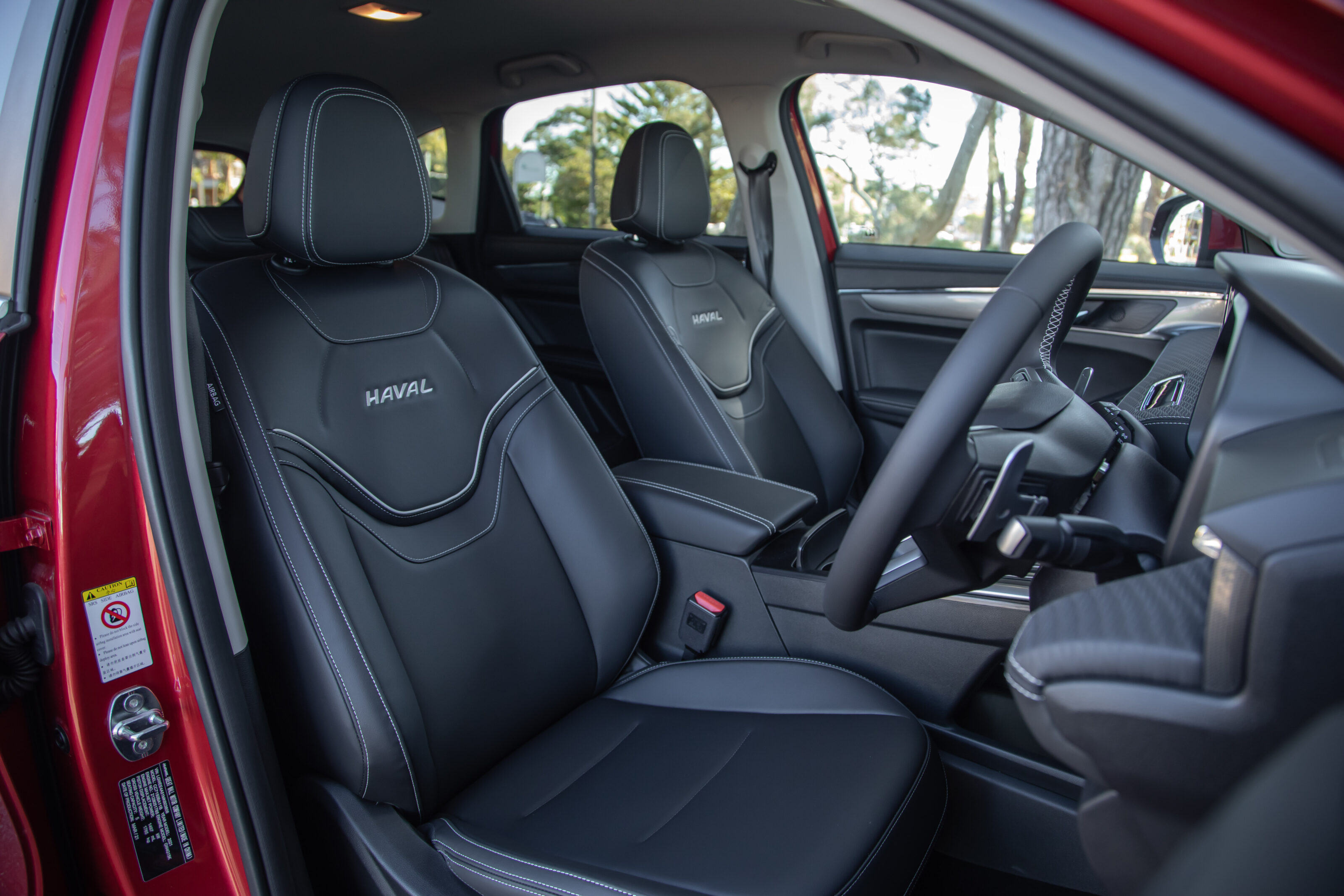
It’s a heck of a lot of safety gear at this price but, as ever, it has to be good. There is also a weird growth on the A-pillar that stares at your face. If you dip your head to look at, say, the transmission selector, it goes all Youth Pastor Rory on you and lightly scolds you for what it deems not paying enough attention.
It’s sensationally irritating but you can turn it off separately to the fatigue detection. Your driving-age kids will love it (they will not) although my resolutely non-texting-while-driving son (he goes off at me even when I’m parked and texting) will resent its accusatory tone.
There are six colours available, but only Hamilton White is a freebie. Azure Blue, Mars Red, Golden Black (another silly name), Vivid Green and Smoke Grey all cost $495 more. The car looks pretty good in the official photos but in the flesh, it’s a bit of a mixed bag. On the smaller alloys, it looks a mite awkward.
The grille is a bit overbearing when chromed up although the detailing in the lights is very 2021, an interesting cross between Audi’s E-Tron GT and Mitsubishi’s Dynamic Shield language.
In profile, the Jolion is derivative of most of its rivals and a scaled-down version of the H6, so it’s a bit blobby and generic as a result. The rear is reasonably coherent, apart from the ill-judged chrome on the lower bumper that serves to make it look like it’s riding much higher than it does.
The big Haval badge is quite unapologetic and the Renault-like C-shaped lighting signature looks good. It will be fun to watch Haval develop its own design language in the coming years.
The interior is rather more successful and worlds away from its cruddy predecessor’s. Lots of soft-touch materials, interesting textures and well-thought-out storage – as well as the jewel-like transmission controller – all look pretty good. The blend into the door cards isn’t as successful as perhaps the designers hoped, but I am impressed with the look and feel.
It doesn’t feel cheap like the outgoing and now much more affordable MG ZS (its updated ZS T form brings a marked improvement as a more direct rival on price), and the Jolion is better designed than the similarly roomy ASX – partly because the latter is a gazillion years old.
Like Peugeot, the upside of collecting most of the functions into the media screen means there are just six buttons in the cabin (that I counted), so it’s very calm and uncluttered.
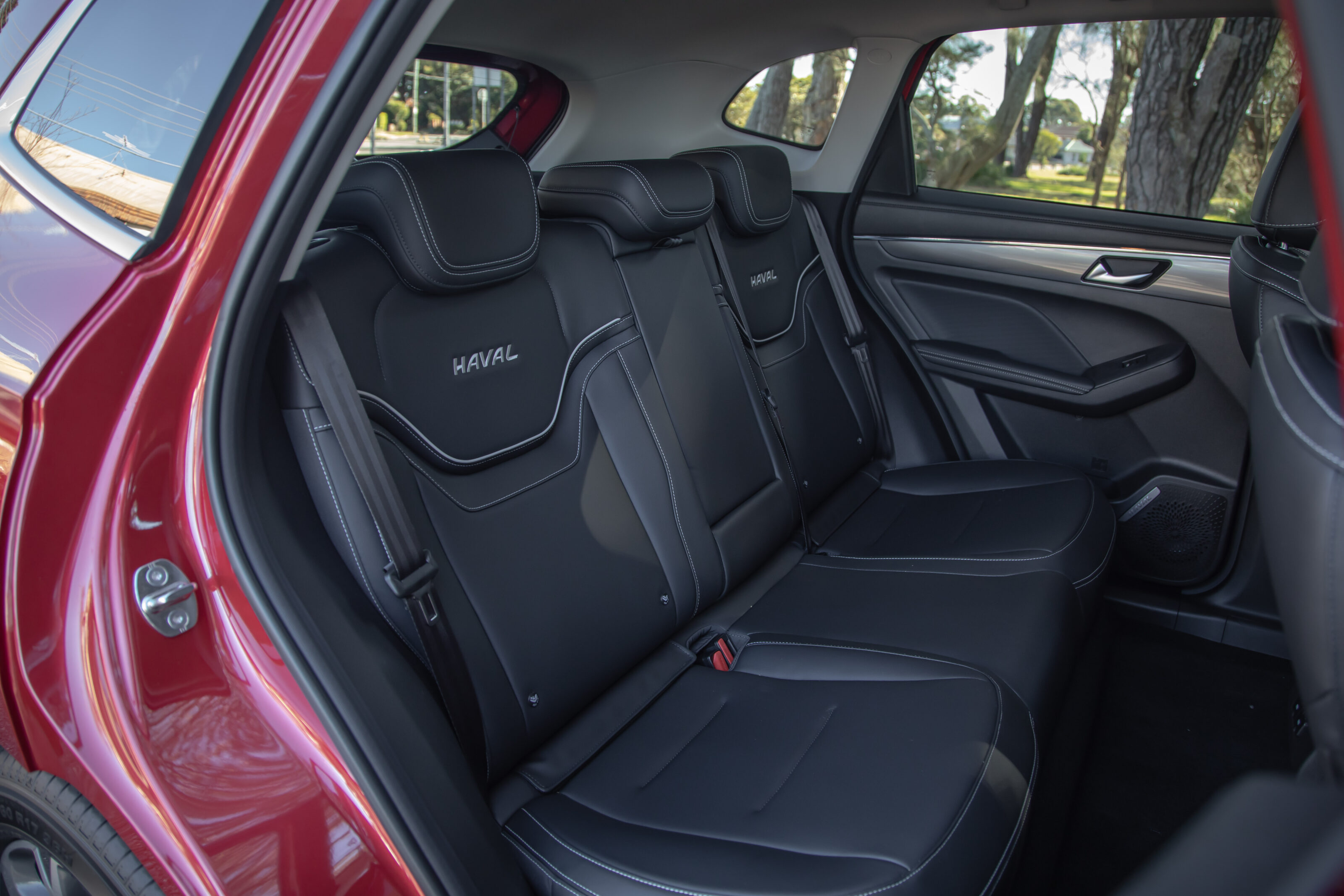
Comfort and space
The Jolion is significantly larger than the H2 it replaces. Starting from the boot, which offers an impressive 430 litres of capacity with the seats in place and 1133L with the rear seats folded.
The rear seat has a very impressive amount of legroom and as generous an amount of headroom. Six-foot-fivers can get into the back and at least have plenty of space for their knees and feet, as much as Honda’s very spacious HR-V.
You get two cupholders in the armrest (which folds flush with the backrest making the middle seat a little less unusable) and the doors each have deep pockets and big bottle holders.
Moving up the front the seats are quite comfortable if nothing special. The fake leather is perfectly pleasant to and there’s a reasonable amount of adjustment.
The centre console hosts a pair of lidded but differently-sized cupholders, a space for your phone to lay flat (on the wireless charging pad where fitted) and on one side of the rotary dial are slots for a really slim phone and on the other side a bigger tray for keys and odds and ends.
You can sling a small bag under the console in a big open-sided tray beneath and there are two USB ports and a cable run to organise your wires. And under the armrest is a deep bin.
Most of the materials are fine, with just a few scratchy plastic panels. The stitching on the inside of the steering wheel might annoy some people and, frustratingly, the steering column only adjusts for rake and not reach. That’s a bit of an own goal.
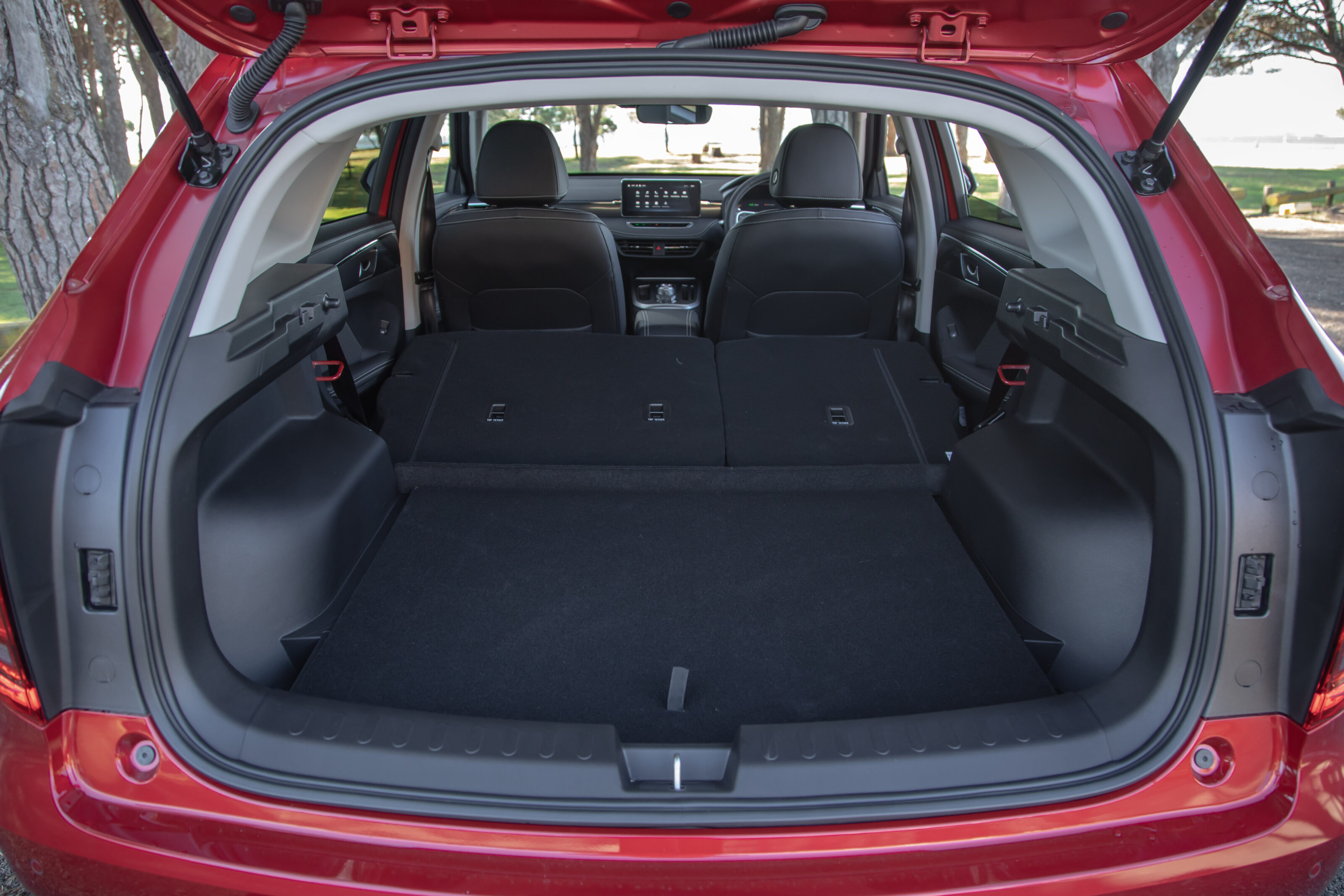
On the road
The silly names continue. The Jolion rides on the Lemon B30 platform, which sounds like a complicated 30 Rock joke. The Jolion shares that platform with the brilliantly named Big Dog, which was the result of a public vote in China. That beats Car McCarface any day. The platform also underpins the larger but less entertainingly named H6.
Developed by Haval’s parent company, Great Wall (or GWM as it prefers these days) the Lemon platform is billed as a “global high-intelligence modular platform”, so think VW’s MQB or Toyota’s TNGA. GWM says it underpins SUVs, sedans and MPVs and will take 24 different engine and transmission combinations, including series hybrid and PHEV.
For now, we get just one engine and transmission, the 1.5-litre turbocharged four-cylinder with 110kW between 5600 and 6000rpm and 210Nm between 2000rpm and 4400rpm. The engine is one of the few things carried over from the very ordinary H2.
It’s front-wheel-drive only and has a seven-speed twin-clutch gearbox operated by a very posh rotary dial on the console or plasticky paddles. The selector by far the best rotary dial selector I’ve used, reacting quickly in three-point turn situations. But, as ever, most passengers thought it was stupid and there were some arguments about it.
By the fairly pedestrian standards of the whole segment, the engine is fine for the job. It’s a bit buzzy under load but is smooth and quiet as you drive around normally. The drama is with the seven-speed twin-clutch.
The shift quality is quite good and it steps smartly between gears without fuss but its fondness for holding third while you’re moving along at a steady speed, such as when you’ve reached the speed limit off the lights, is perplexing. It’s the kind of thing a software update will sort, but it’s annoying.
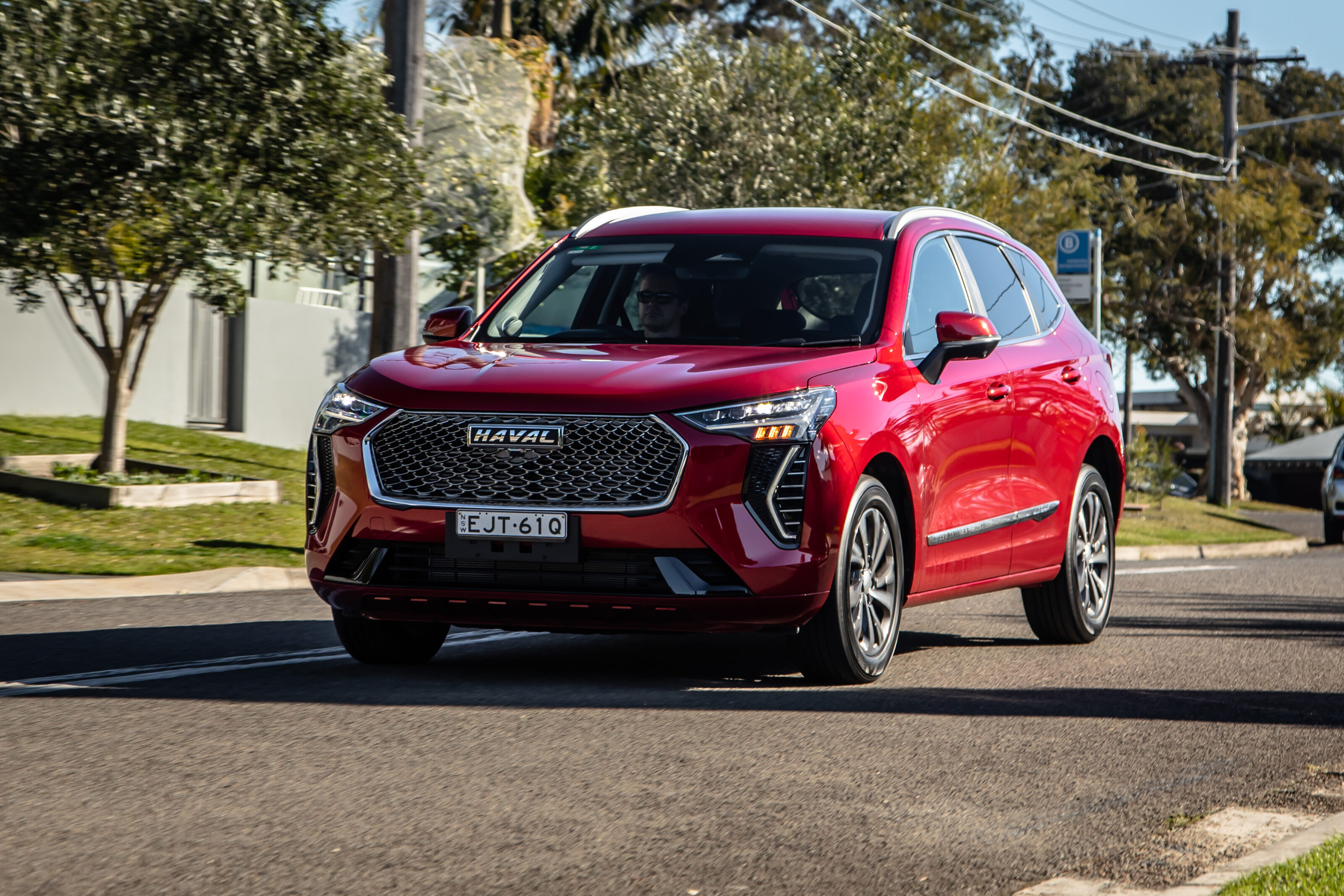
Also a little frustrating are the endless interventions from the safety systems. The frantic beeping from the blind-spot monitoring needs some work as you can just be sitting at the lights with the indicator on and it will warn you of the car next to you.
You have to override the lane-keep assist as well when you’re changing lanes but it does work out what you’re up to once you’ve left the lane safely. It’s better to have all this stuff than not, but like the old Subaru Forester’s wild-eyed EyeSight system, you just want to shut it off. Again, software adjustments will do it the world of good.
The front end is kept off the ground by MacPherson struts while the rear is a torsion beam arrangement. It seems like a lot of work has gone into the setup because it feels really good on the road.
Compression damping is excellent whether you’re going over a dip in the road or firing down a particularly lumpy bit of tarmac.
Its composure around town is excellent and unlike its Chinese compatriot, the whole car stops when you jump on the brakes – the MG ZS quivers on its springs like our dog when confronted with evidence of a foul crime.
Unexpectedly good body control sucked me into getting a bit more ambitious than I was expecting and revealed that the Kumho Solus tyres give up pretty quickly, but without any great drama.
The body might wobble on a quick change of direction, but not alarmingly so and body roll is kept in check. It’s not flat in the corners but there’s no heaving or porpoising.
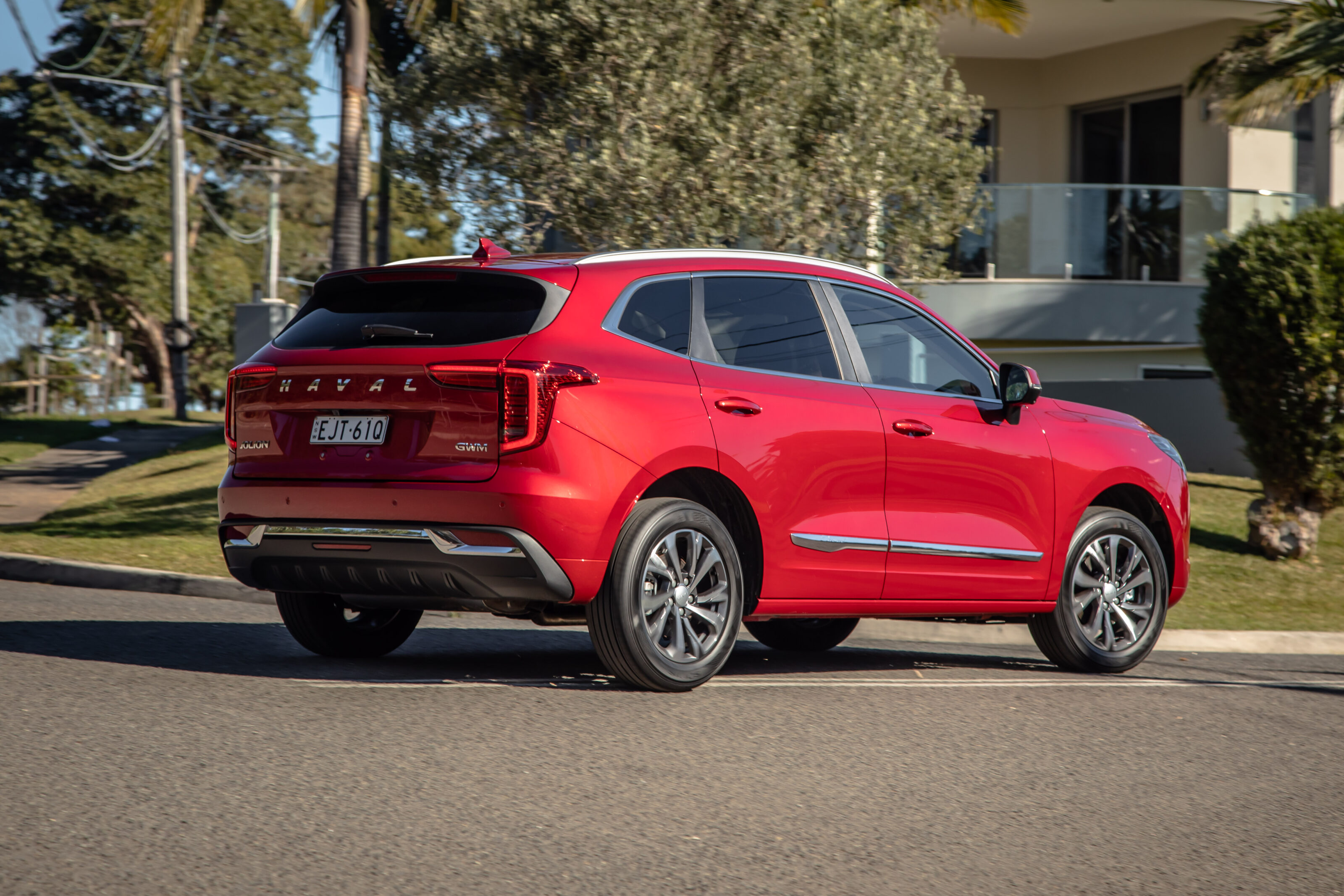
I thought the brake pedal feel was well-judged, too – there are plenty of cars from much more experienced car makers that can’t get that right. The steering is well-weighted if largely feel-free, although the lack of reach adjustment in the column meant I was never completely comfortable.
The front seats need to go down towards the floor a bit further, too, but they’re supportive if a bit odd feeling at first. I put it down to the wide space between the bolsters.
Haval says the Jolion will use 8.1L/100km on the combined cycle, which seems reasonable to me. I can’t tell you what the car thought because the steering wheel-mounted button to change the dash display didn’t work. And yes, I read the manual. Given I covered about 200km on about 40 per cent of the tank, I wasn’t far off the official figure.
Ownership
Haval offers a pace-equalling seven-year warranty, matching Kia’s efforts with unlimited-kilometre coverage. You only get roadside assistance for five years, though.
Service intervals are closely spaced at 12 months/10,000km. The capped-price servicing covers the first five services and cost between $210 and $450, for an average of $310, which slips just under some of its obvious rivals.
Only Toyota can really beat Haval on servicing value.
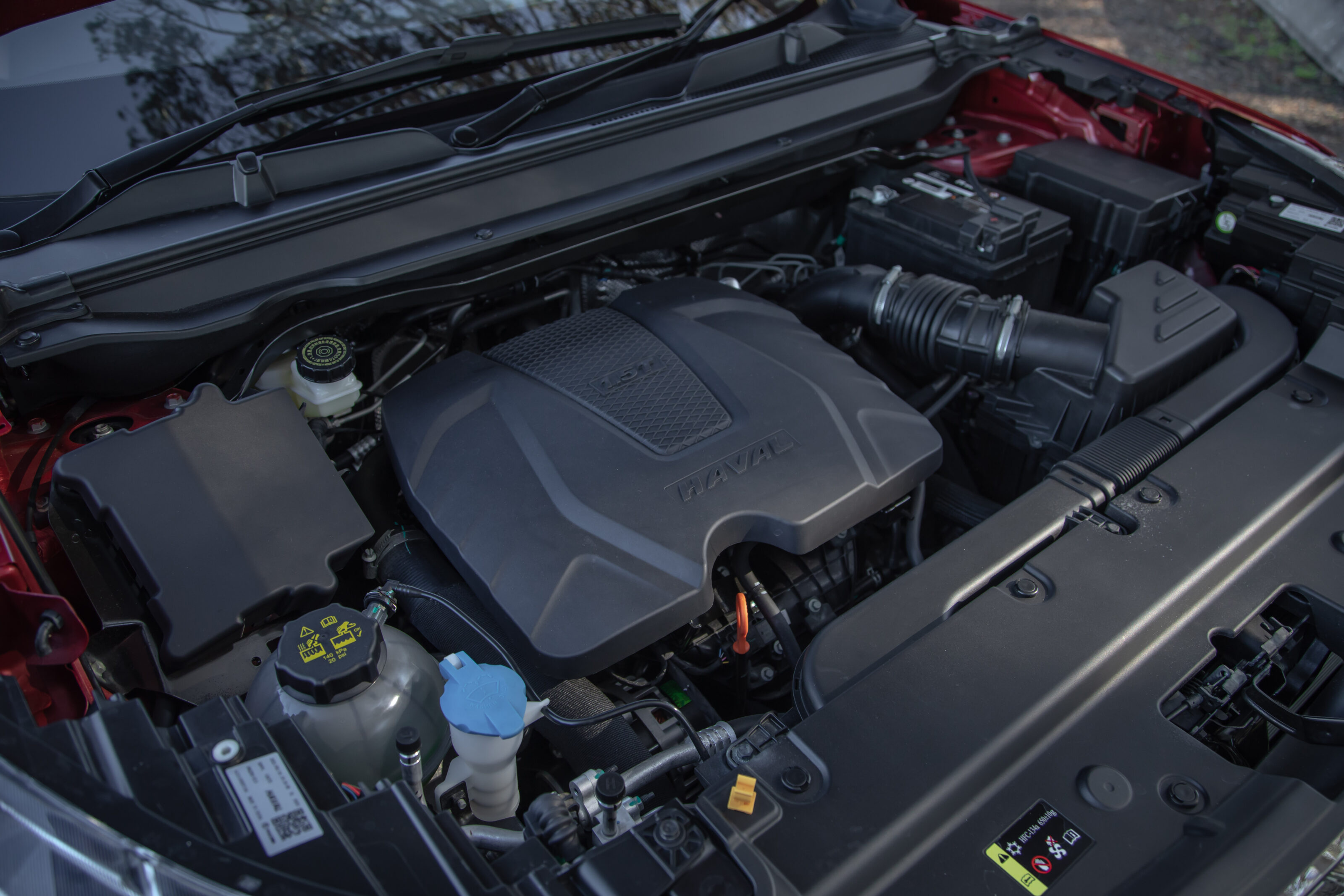
VERDICT
Negative market perception is more powerful than compound interest. If scientists could harness it, it could solve climate change overnight. Every goose who asks, “who’s paying fifty grand for a Hyundai?” in the comments of every Santa Fe review would finally be making themselves useful.
Chinese brands cop a lot of stick in Australia and some of it is fair, some of it isn’t. The Jolion is not perfect and there are still some things that need ironing out. But the giant lift in quality, driveability and comfort compared to the H2 is marked and brings it into contention, particularly with the pricing.
It genuinely punches on with established heavyweights in the segment and I think it’s better than the underwhelming but hot-selling ASX. It will get a bloody nose from a Kia, Hyundai or Mazda, but it will go down swinging. You can’t say that about previous Havals or any of MG’s current SUV range.
The pick of the three-variant Jolion range does look to be the Lux I drove – and I reckon it will be the top-seller – but the closely-packed pricing makes the choice hard. Spending under thirty grand in this segment is a big win, the Jolion is packed with stuff and is very, very spacious.
One thing about the Jolion is that you can’t write off someone who buys it as a cheapskate, because it’s a better car than that. I tell anyone who’ll listen that Chinese cars can and will be better. The Jolion might be the first of those.
2021 Haval Jolion specifications
| Body | five-door SUV |
| Drive | AWD |
| Engine | 1.5-litre turbocharged four-cylinder |
| Transmission | seven-speed twin-clutch |
| Power | 110kW @ 5600-6000rpm |
| Torque | 210Nm @ 2000-4400rpm |
| Compression ratio | 9.3:1 |
| 0-100km/h | 11 sec (estimate) |
| Fuel consumption | 8.1L/100km (combined) |
| Weight | 1370kg |
| Suspension | MacPherson struts front/ torsion beam rear |
| L/W/H | 4472/1841mm/1619mm |
| Wheelbase | 2700mm |
| Brakes | mm ventilated disc front / mm solid disc rear |
| Tyres | 215/60R17 / 255/55R18 (Ultra) |
| Wheels | 17-inch wheels/18-inch (Ultra) (space-saver spare) |
| Price | $25,490 – $30,990 drive-away |
We recommend
-
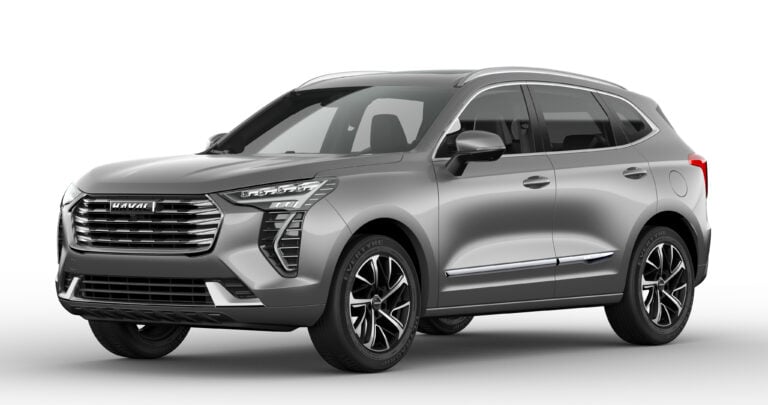 News
News2021 Haval Jolion SUV pricing and features
Haval's latest offering undercuts its competitors by thousands
-
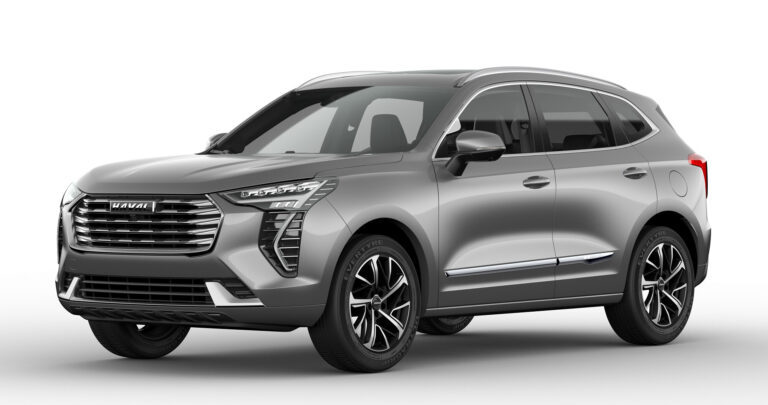 News
News2021 Haval Jolion LE Australian pricing and features
Just 300 units of the Chinese marque's successor for the H2 will be available for now
-
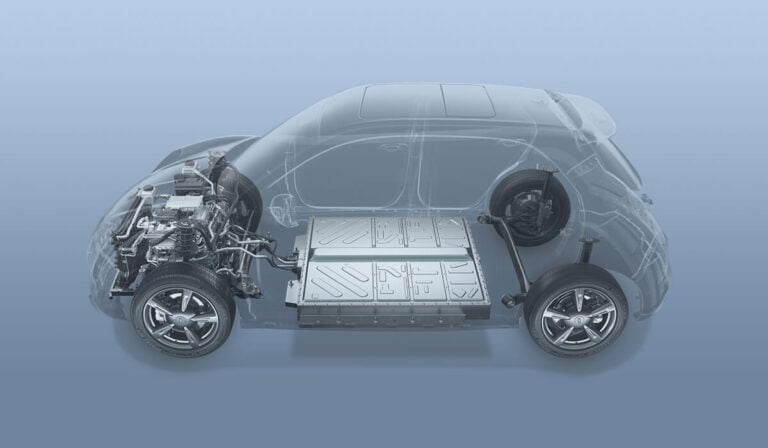 News
NewsGreat Wall Motors powers up electrification plans
GWM confirms Haval H6 hybrid on the way, serious interest in $35K Ora EV


